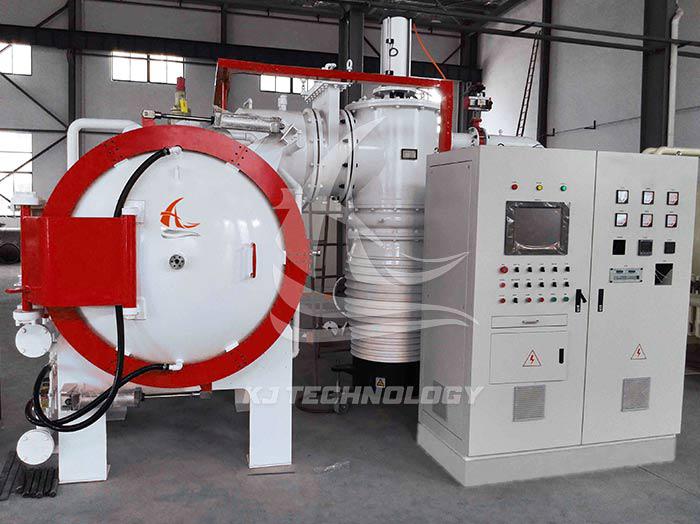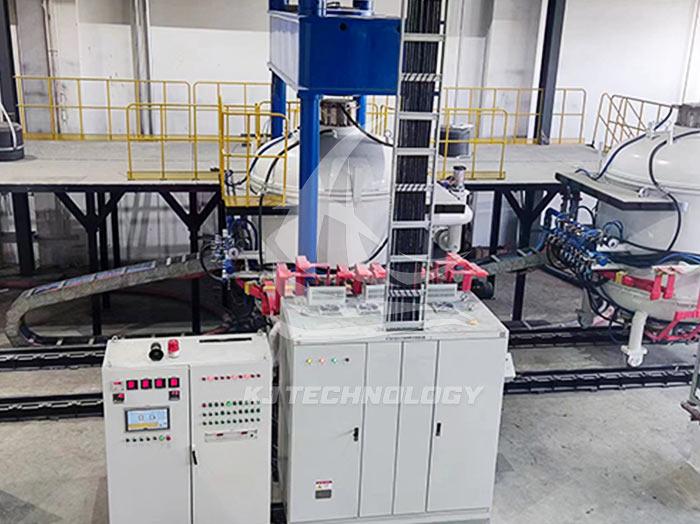The graphite vacuum furnace used in the laboratory cannot achieve the desired vacuum level
 07-22-2025 Author: KJ technology
07-22-2025 Author: KJ technology
The inability of the graphite vacuum furnace in the laboratory to vacuum up may be caused by vacuum pump failure, aging or damage of seals, system leakage, heating element or control system failure, cooling system problems, etc. The following are specific analysis and solutions:
Vacuum pump malfunction
Possible reasons: pump oil contamination, insufficient or too thin, resulting in poor or damaged operation of the vacuum pump; The pump overheats and the components expand, resulting in a small gap; Improper cleaning can cause debris to enter the oil.
Solution: Clean the vacuum pump and replace it with new vacuum pump oil; Replace with a new pump; Strengthen the cooling of the pump; Check if the power supply is normal, repair or replace damaged vacuum pump parts.
Seal aging or damage
Possible reasons: aging, corrosion, or damage of seals, loose connections at pipeline joints, air leakage from solenoid valves, pipe joints, vacuum pump suction valves, and sealing gaskets around the working chamber.
Solution: Check and replace aging or broken seals to ensure good sealing; Check the pipeline connections, solenoid valves, pipe joints, etc., and repair or replace them; Extend the pumping time; Clean or replace the exhaust filter.
System leakage
Possible reasons: malfunction of solenoid valve, aging or damage of valve; The O-ring of the suction valve has come off; The return valve is blocked.
Solution: Inspect the valve, perform maintenance or replacement; Remove the vacuum tube from the pump nozzle, remove the suction nozzle, take out the compression spring and suction valve, gently stretch the O-ring several times, re insert it into the groove, and then install it again; Remove the return valve and clean it.
Testing method:
Static pressure rise method: After the container is pumped to a certain pressure, the vacuum valve is closed to separate the pumped container from the pump. Due to the leakage of gas and material, the pressure in the container will change over time. By measuring the pressure in the container with a corresponding vacuum gauge at regular intervals, a pressure time curve can be drawn. If the curve is a straight line parallel to the horizontal axis, it indicates that the container is neither leaking nor releasing air, and the vacuum degree cannot be increased due to poor working conditions of the pump; If the pressure on the curve starts to rise rapidly, then the rate of increase slows down, and finally reaches equilibrium, it indicates that the container is not leaking gas but rather the lining material is releasing gas; If the curve pressure increases linearly with time, it indicates that the container is leaking gas while the lining material is not; If the pressure on the curve starts to rise rapidly, then slows down, and finally forms a straight line with a slope of Δ P/Δ T, it indicates that the container has both gas leakage and deflation.
Flame method: Using the principle that airflow can cause the flame to deviate, first draw a vacuum and gradually search near the suspicious point with a candle or lighter. If the flame deviates towards the leak point, the leak point can be found.
Heating element or control system malfunction
Possible reasons: aging, damage or poor contact of heating elements, burning of heating strips, burning of heating wires; Damaged or improperly set temperature controller, broken or short circuited thermocouple wires, temperature control instrument malfunction; Damage or poor contact in the power supply circuit of the control system, damage or aging of internal components of the control system, and software failure.
Solution: Check the connection and resistance of the heating element, repair or replace damaged heating elements; Check and adjust the settings of the thermostat, replace or reconnect the thermocouple, and repair the control system; Check the power supply circuit of the control system to ensure normal power supply; Check and replace damaged components inside the control system; Update or reinstall control system software; Ensure stable power supply voltage, and install a voltage regulator if necessary.
Cooling system issues
Possible cause: Blockage in the cooling water pipeline and insufficient supply of cooling water.
Solution: Check if the cooling water pipeline is unobstructed, ensure sufficient cooling water supply, and clean any blockages.








